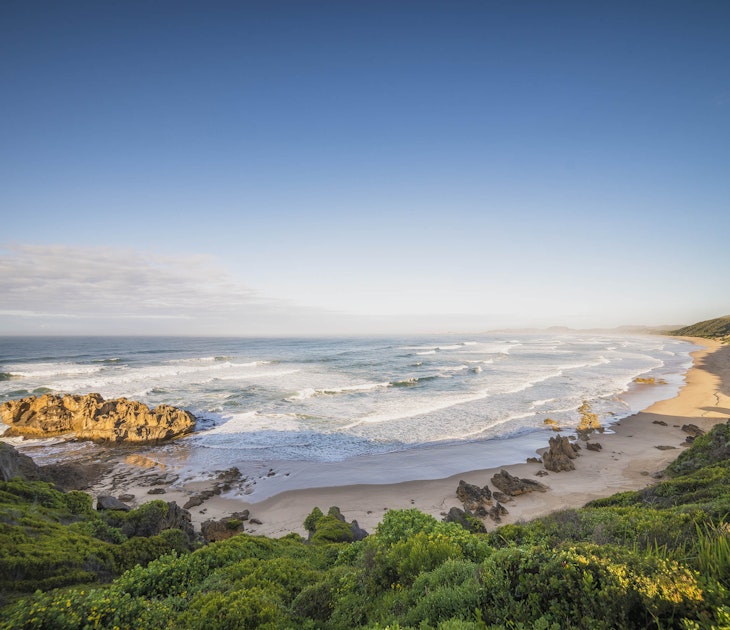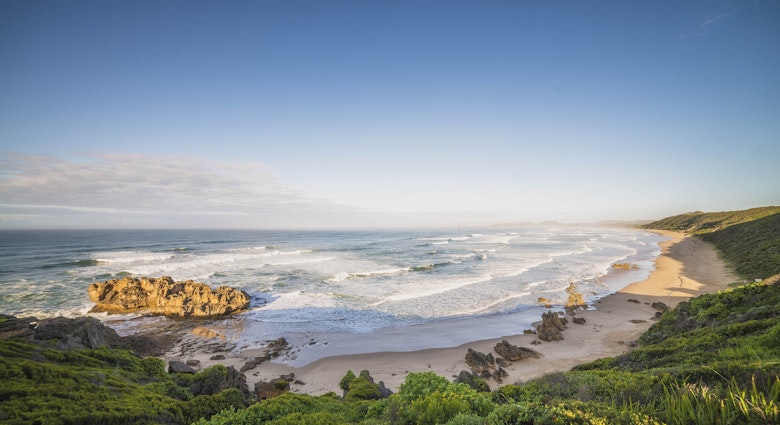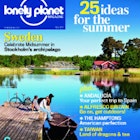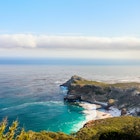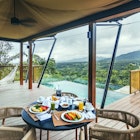The Northern Cape is South Africa’s largest and most sparsely populated state, wedged between the Atlantic Ocean and the Namibian border. Not many travellers venture here, but the ones that do make the journey will be exhilarated and transported by the expansive landscapes, spectacular natural phenomena and fascinating history.
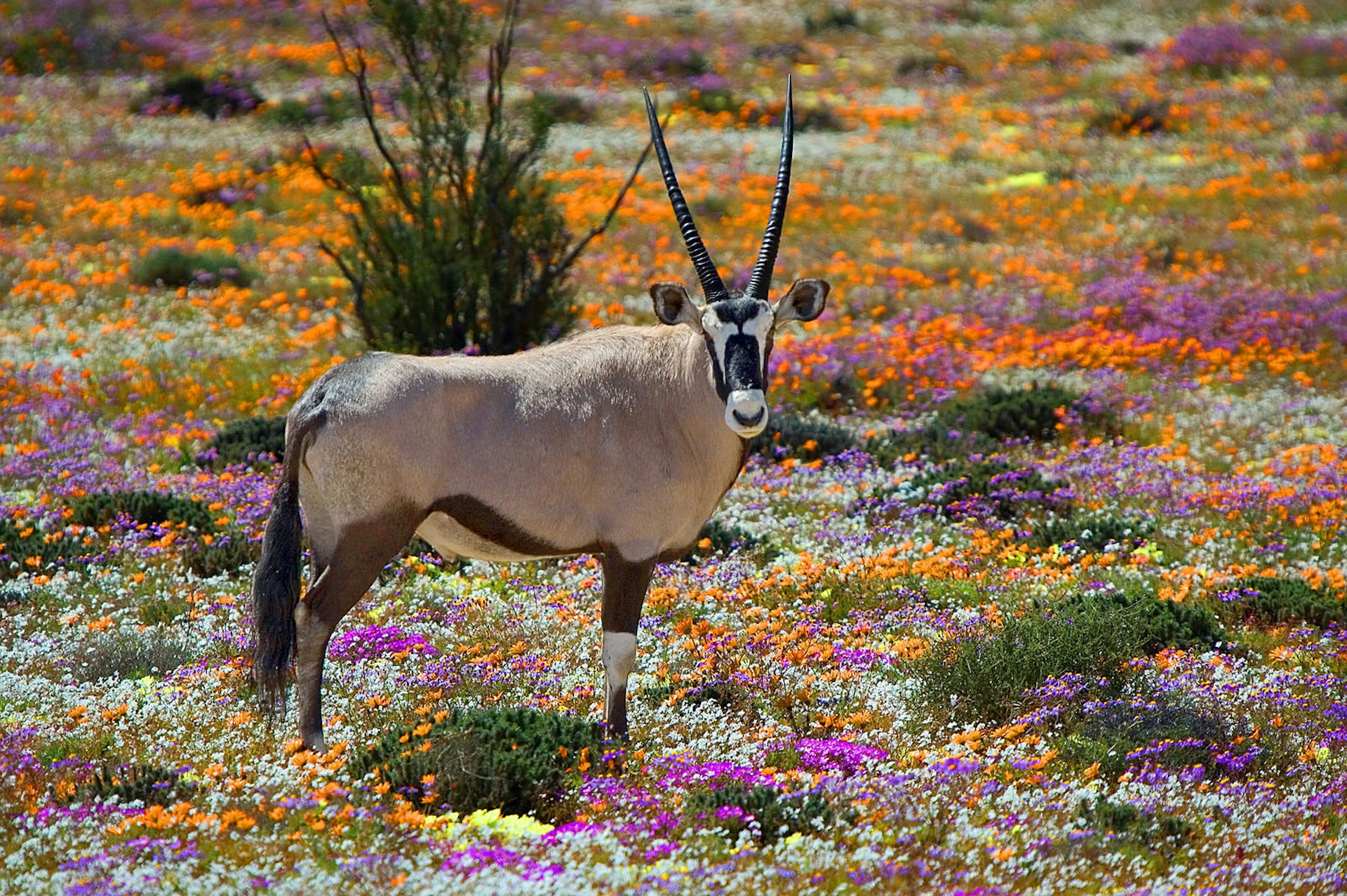
See the Namakwa desert in full bloom
Rarely does the natural world put on such a spectacle as the Namakwa desert in full bloom. An eye-popping patchwork of orange, yellow, white and purple wild flowers seems to cascade out of distant valleys and flood the landscape as far as the eye can see. The majority of the blooms belong to the daisy family (Asteraceae) and, somewhat surprisingly, the most impressive displays tend to appear not in pristine nature reserves, but on recently disturbed ground such as fallow farmland. The flowers are true sun-worshippers, only opening between 11am and 4pm on sunny days, and turning their faces towards the sun, so you’ll get the best views (and photographs) with the sun at your back.
There’s a large element of luck involved in getting to experience this natural show at its height. Namakwa's flower season tends to peak during August, but can shift as early as July or late as September. The exact timing and intensity of the blooms depends on the winter rains in the preceding months. The flush of flowers starts in the north near the border with Namibia and moves south towards Cape Town. Good areas to look for flowers include the Goegap Nature Reserve near Springbok and the Namaqua National Park near Kamieskroon, but it’s best to get timely local advice by calling the Flower Hotline.
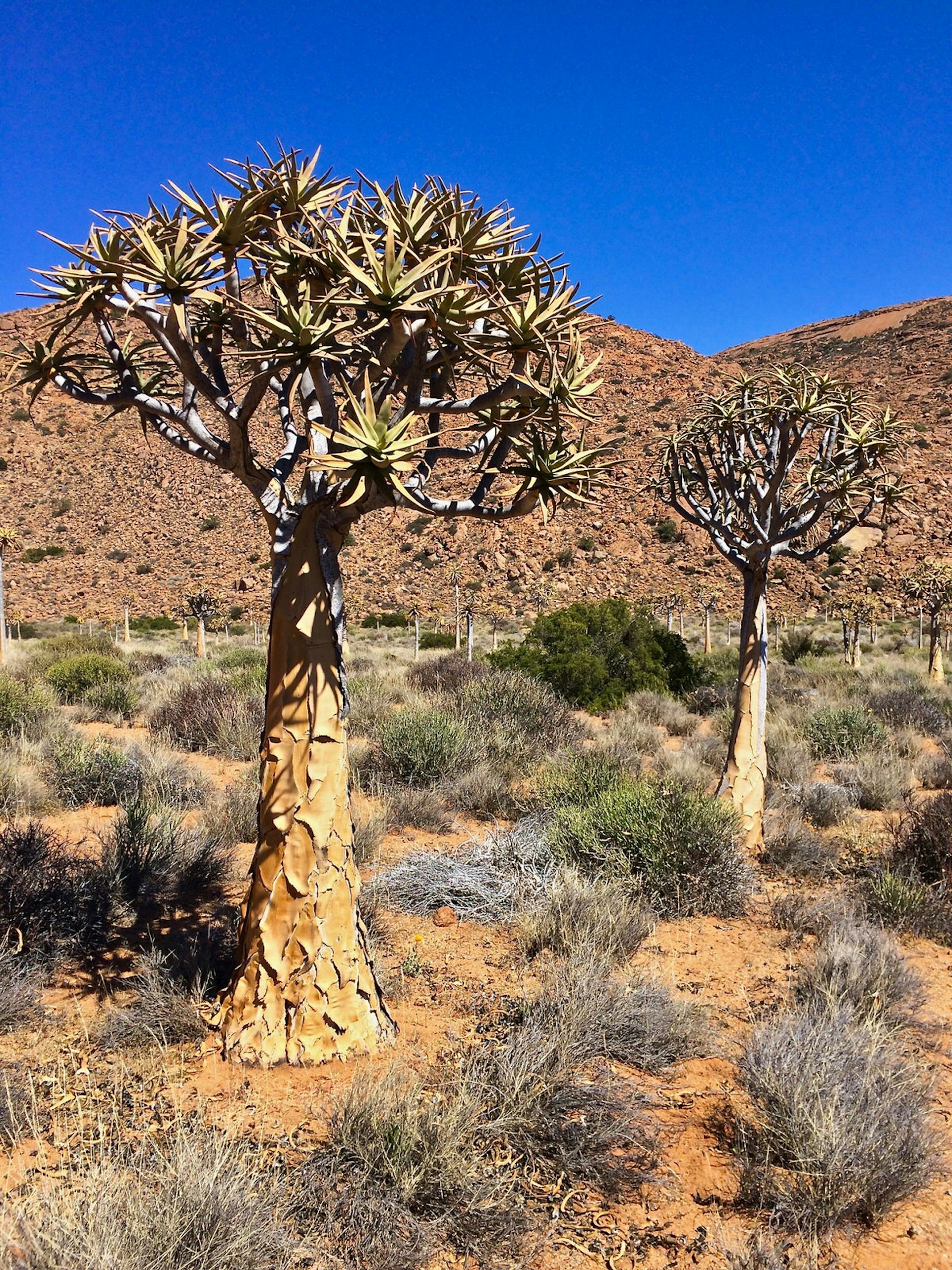
Strange succulents and quiver tree forests
The Northern Cape has a second botanical string to its bow, as a biodiversity hotspot for succulent plants. Unlike the showy fields of daisies which impress from afar, the fascinating succulents are at their best under close examination. There is huge variety on show, from tough little ‘rock plants’ clustered close to the ground, to the bright red flowers of the ‘ostrich vygies’ that have thin wispy petals like ostrich feathers. Many have disturbingly anthropomorphous features, such as tongue-shaped leaves covered in glistening watery bumps like taste buds, or the ‘bandaged-finger plant’ that looks like an Egyptian mummy’s hand clawing its way out of the ground.
The king of the succulents is the quiver tree. Like an aloe vera plant on steroids, its spiky bulbous leaves splay skywards whilst spotted papery bark peels off its cracked trunk in sheets. The San bushmen used the branches to make quivers, hollowing out the spongy insides and using the tube to carry their arrows. The rare tree only appears in this part of southern Africa, and the most impressive place to see them is in one of the few ‘quiver tree forests’, where numerous trees, some hundreds of years old, group together on a tract of land that has a better water supply than the surrounding desert.
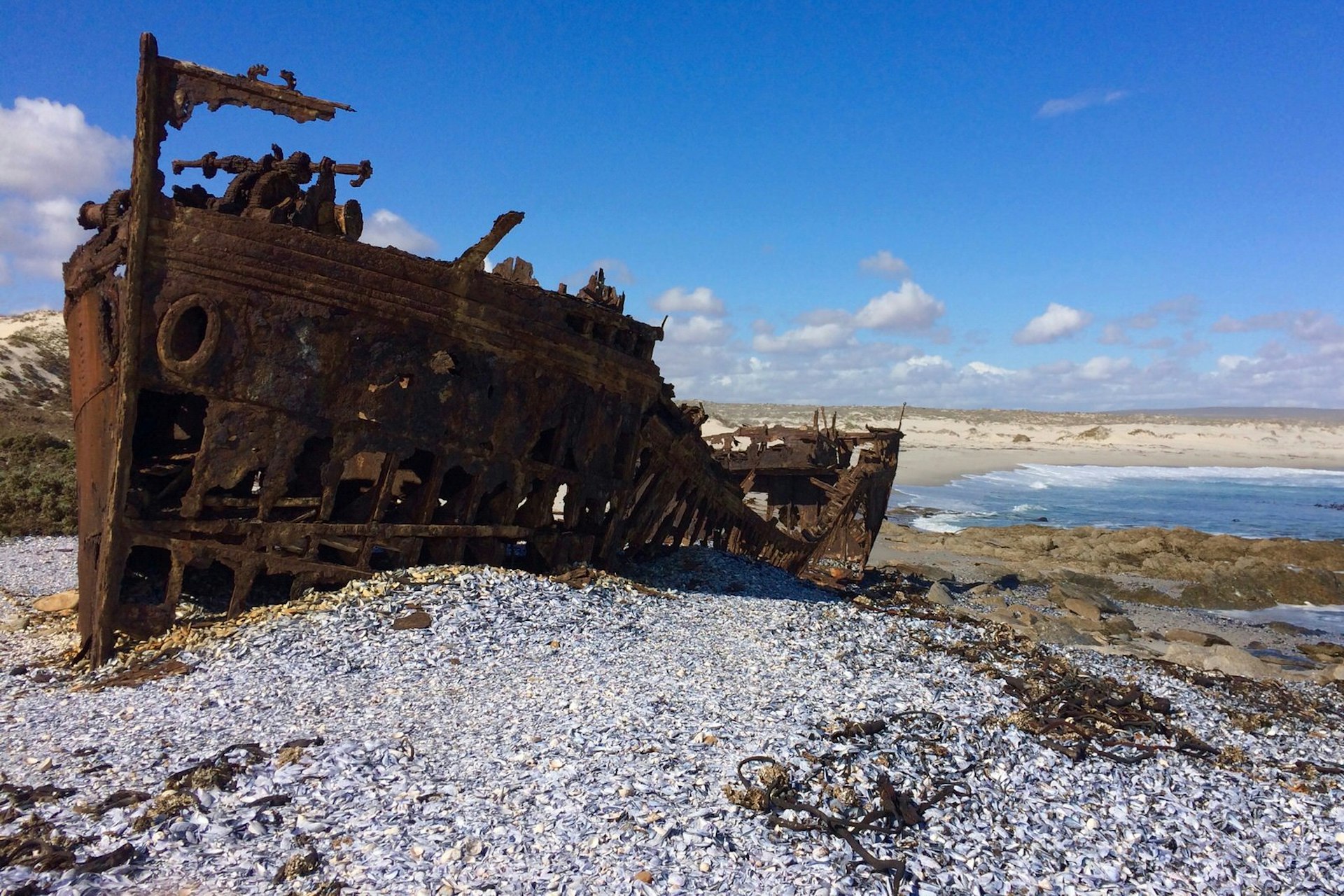
Going off-road on the shipwreck trail
The northern part of South Africa’s Atlantic coast is wild and desolate. The enormous waves that pound against the shore have left the coastline between Kleinsee and Koingnaas scattered with shipwrecks. Their rusting hulks lie beached high up on the rocks like decaying rib cages, with the huge cogs and drivers of their innards spewed across the white sand. The beaches are strewn with other detritus thrown up from the deep: rubbery strands of kelp, bleached whale bones and vast heaps of large silver mussel shells that crunch underfoot.
There’s a great chance of seeing marine mammals: cape fur seals lounge like giant shiny slugs on the rocks, sleek Heaviside’s dolphins slide through the surf and humpback whales migrate along the coast in June and September. Sightings of terrestrial wildlife are common too, with ostriches, meerkats, springbok, steinbok and lots of species of lizards and birds inhabiting the dunes.
One of the best ways to explore this stretch of coast is to follow the exciting Shipwreck Tour through the dunes. It’s a very challenging 4-5 hour guided drive, with deep sand in some places that must be ridden out like a roller coaster, with the wheels snaking wildly and the driver barely touching the steering wheel. Elsewhere, the car judders and bounces up rocky slopes as if it is on a giant stair-master machine and corrugated roads shake your teeth in their sockets. If you prefer to take things slower and more steadily, you can hike the Diamond Coast Trail over 3-5 days, lightening the load by arranging to have your bags transferred between the camping areas along the way.
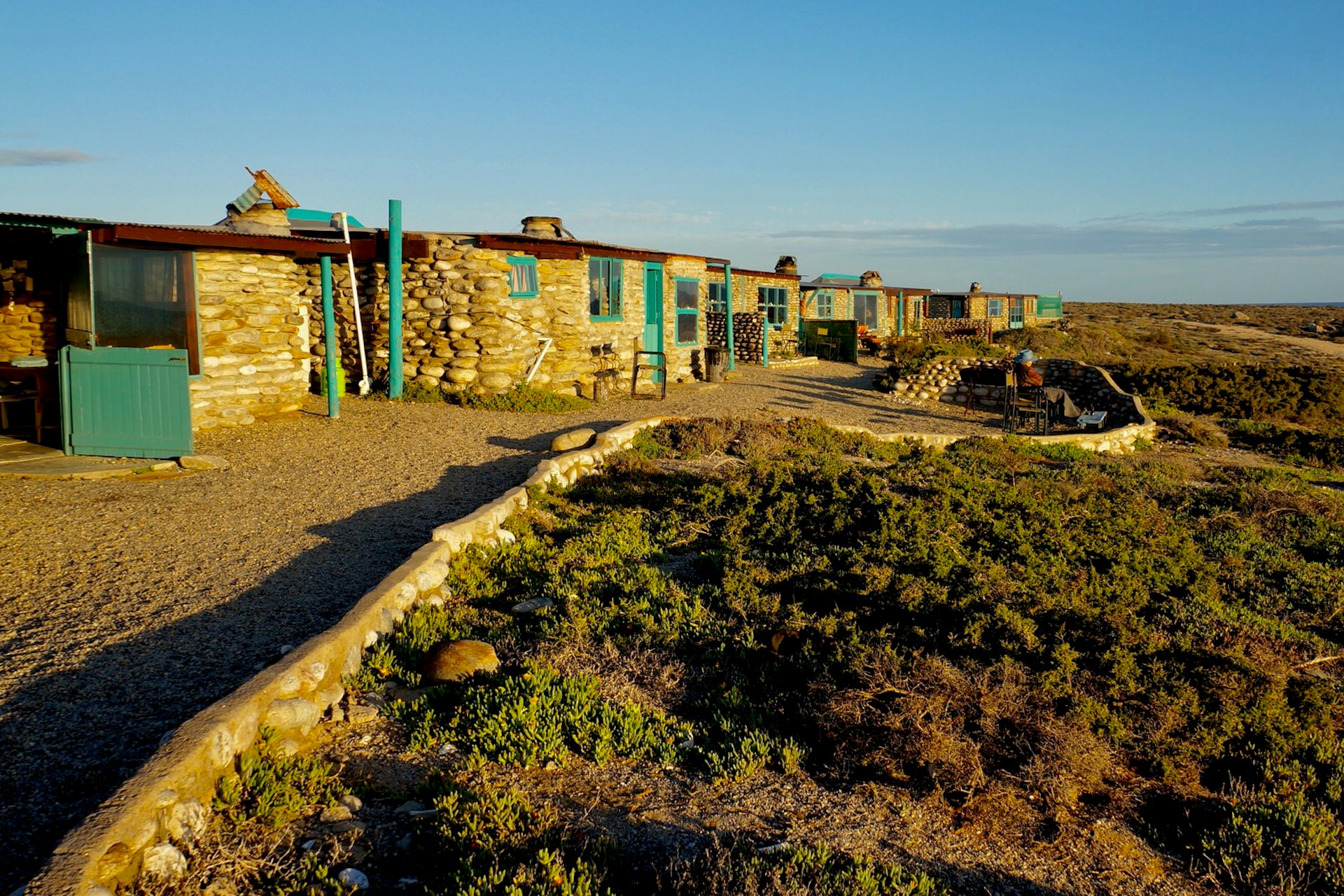
Diamond miners and golden sunsets
South Africa’s northwest coast owes its undeveloped state to the diamond mining industry. Over millennia, diamonds that formed billions of years ago hundreds of kilometres away in the centre of South Africa, have eroded out of the earth and washed downstream into the sea. Brave diamond divers would wait weeks for a break in the stormy weather, then venture into the icy cold water beneath the crashing waves to pluck out the precious stones.
At Noup, you can stay in one of nine basic huts on the seafront that were built by diamond divers. It’s a rustic experience, with the only heat coming from an open fire and electricity only available a few hours a day, but authenticity and spectacular sea views more than make up for any discomfort. The sound of rolling foamy waves crashing onto round granite boulders is a constant accompaniment, and the sunsets are spectacular, thanks to the west-facing aspect. As the sun begins to drop it casts a golden glow across the landscape, bringing out the yellow tones of the rocks and soil. The orange sun drops quite quickly below the horizon, leaving clouds edged with brilliant molten orange fringes and a magenta pink glow that coats the waves.
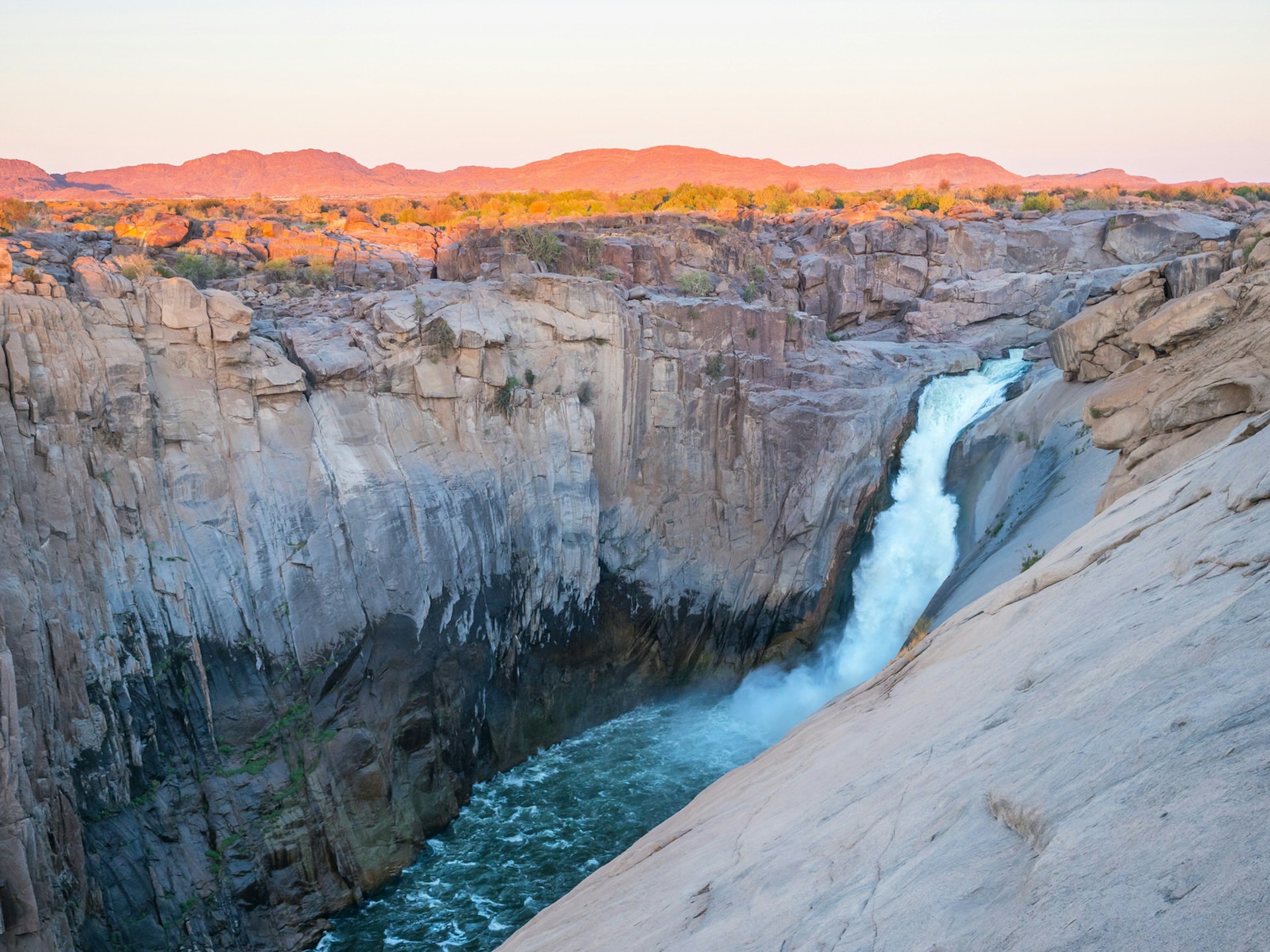
Orange River rafting and Augrabies Falls
The Orange River is South Africa’s longest watercourse, extending almost the full width of the country from the Drakensberg mountains in Lesotho to the Atlantic. It is the lifeblood of the inland Northern Cape, where irrigation from the river creates a patchwork of agriculture, allowing table grapes, oranges and pomegranates to be grown in the desert.
One of the best ways for visitors to experience the river is to take to its waters on a raft. The river is peaceful and beautiful, framed by tall reeds and grasses, with white egrets, herons, cormorants, darters and swifts sent flapping up into the sky if the rafts take a wrong turn into the banks. The khaki water is by turns limpid and fast flowing, the rapids sending the rafts spinning, eliciting shrieks and giggles from their inhabitants.
Just a little further downstream the river plunges over a rocky precipice at Augrabies Falls, descending 56m into a narrow gorge. The falls earn their name, which means ‘place of great noise’, and the roar of the water is particularly deafening in the rainy season. There’s plenty of wildlife in the surrounding national park, with menacing baboons and cute dassies (rock hyrax) sitting on the rocks around the viewing platforms, and sightings of more elusive animals such as giraffes and leopards possible on game drives.
Anna Tyler travelled to the Northern Cape with support from South African Tourism and South African Airways. Lonely Planet contributors do not accept freebies in exchange for positive coverage.
Check out adventure tours for every traveller from our trusted partners.

